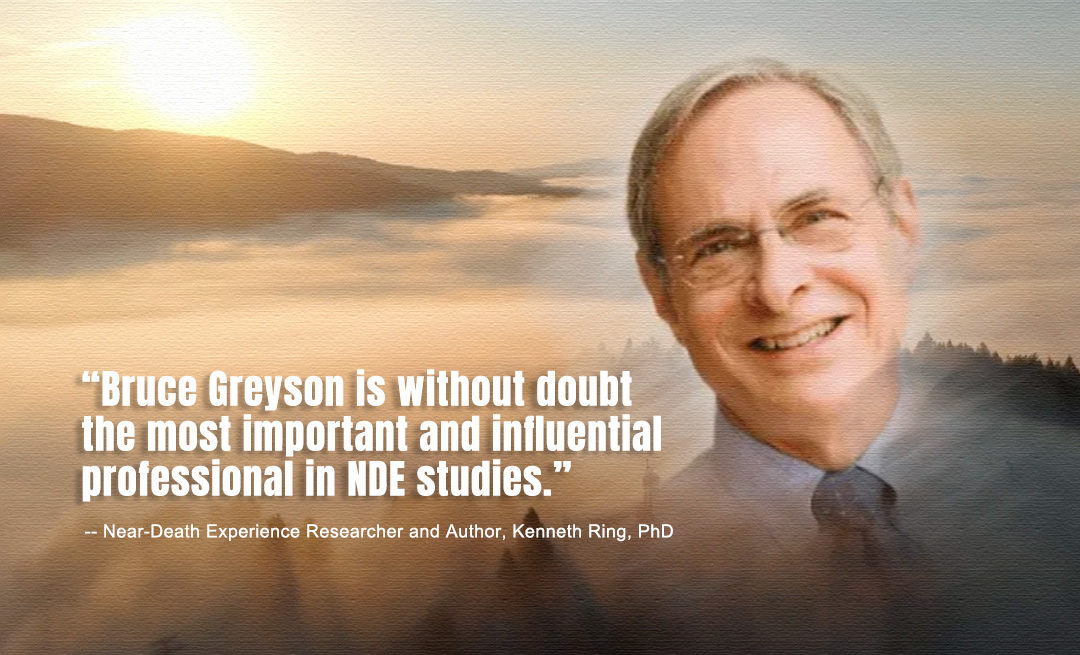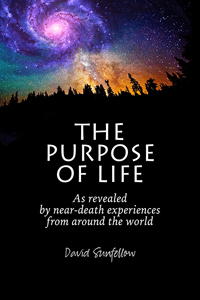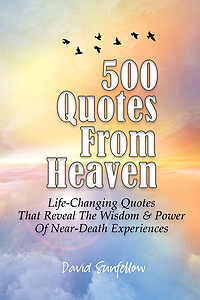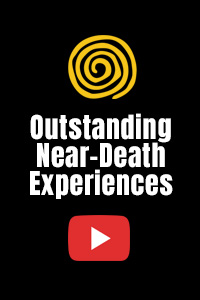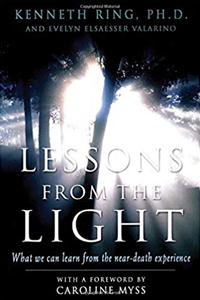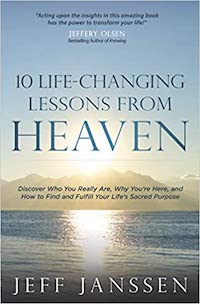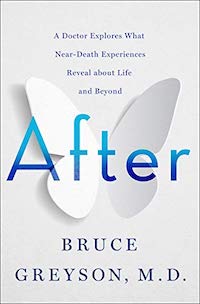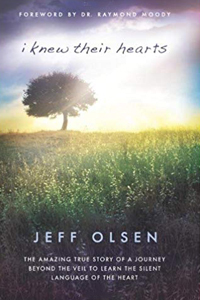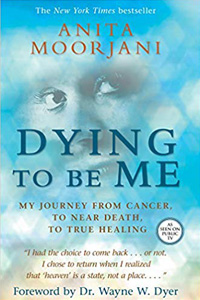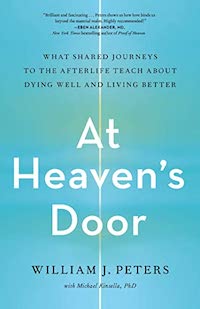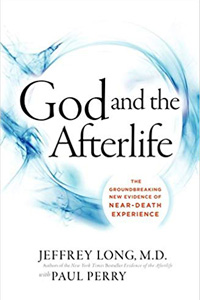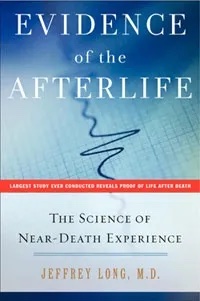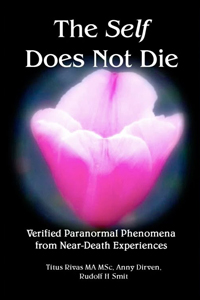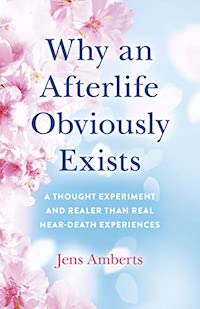“Bruce Greyson is without doubt the most important and influential professional in NDE studies.”
— Near-Death Experience Researcher and Author, Kenneth Ring, PhD
……………..
Related Links:
• Dr. Bruce Greyson Website
• Dr. Bruce Greyson Book: After
• UVA Division of Perceptual Studies YouTube Playlist: Investigating Near-Death Experiences
• Dr. Bruce Greyson Bio Page On The University of Virginia Medical Center Website
• Wikipedia on Dr. Bruce Greyson
• Kenneth Ring – Miraculous Returns: Terminal Lucidity And The Work Of Alexander Batthyany
• Terminal Lucidity – The Case of Anna (Kathe) Ehmer
• Greyson & Storm: Reincarnation
• Moody, Greyson, Long – Elements of NDEs
• 5% Have Had A Near-Death Experience – And They Say It Made Life Worth Living (New York Post – 02/20/21)
……………..
Dr. Bruce Greyson: Are Near-Death Experiences Real? Here’s What Science Has To Say.
……………..
Dr. Bruce Greyson: What Is The Difference Between Near-Death Experiences & Dreams?
……………..
Dr. Bruce Greyson: Near-Death Experiences Kill The Person That You Used To Be
……………..
Dr. Bruce Greyson: Is There An Afterlife?
……………..
Dr. Bruce Greyson – Buddha At The Gas Pump Interview
Excerpt:
“It is very common for people to say that what they experienced was totally different from what they were taught to believe in. I’ve talked to people who were die-hard Christians, fundamentalist Christians who came back with non-denominational spirituality saying that it was not what I was led to believe. We also did a study looking at people who reported near-death experiences before Raymond Moody wrote his book in 1975 which gave us that name and told us what to expect in NDEs . . . We collected the best two dozen cases of those we had before the 1970s and compared them with a matched group we collected in recent years — matched in terms of age, gender, religion, religiosity, how close they came to death, how they came to be close to death — and we found that there was absolutely no difference. What people reported before Moody told us what to expect is the same as what they report now.”
……………..
After: A Doctor Explores What Near-Death Experiences Reveal about Life and Beyond
By Bruce Greyson
Amazon Description:
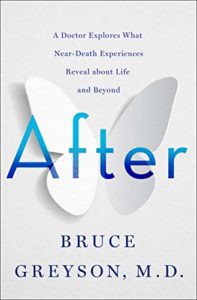 The world’s leading expert on near-death experiences reveals his journey toward rethinking the nature of death, life, and the continuity of consciousness.
The world’s leading expert on near-death experiences reveals his journey toward rethinking the nature of death, life, and the continuity of consciousness.
Cases of remarkable experiences on the threshold of death have been reported since ancient times, and are described today by 10% of people whose hearts stop. The medical world has generally ignored these “near-death experiences,” dismissing them as “tricks of the brain” or wishful thinking. But after his patients started describing events that he could not just sweep under the rug, Dr. Bruce Greyson began to investigate.
As a physician without a religious belief system, he approached near-death experiences from a scientific perspective. In After, he shares the transformative lessons he has learned over four decades of research. Our culture has tended to view dying as the end of our consciousness, the end of our existence — a dreaded prospect that for many people evokes fear and anxiety.
But Dr. Greyson shows how scientific revelations about the dying process can support an alternative theory. Dying could be the threshold between one form of consciousness and another, not an ending but a transition. This new perspective on the nature of death can transform the fear of dying that pervades our culture into a healthy view of it as one more milestone in the course of our lives. After challenges us to open our minds to these experiences and to what they can teach us, and in so doing, expand our understanding of consciousness and of what it means to be human.
……………..
How It All Began
By Kenneth Ring
One evening in November, 1977, I was in my kitchen stirring some cream sauce when the phone rang. Still stirring the pot with my left hand, I reached across for the phone and heard an unfamiliar voice on the line speaking with a southern accent.
“Hello, Ken? This is Raymond Moody.”
“No shit?” I replied. [Yes, I actually said that.]
I stopped stirring my cream sauce.
Raymond wanted to invite me down to Charlottesville, Virginia, where he then lived, along with several other researchers whom he had heard were following up on his work, and someone had drawn his attention to me. That someone — a sociologist colleague of Moody’s named John Audette — would soon be in touch about the arrangements, but meanwhile Raymond was hoping I could come down.
Could I!
At that time, I was living near the University of Connecticut, where I then taught, with a former student of mine, Sue Palmer, and my daughter, Kathryn. Sue was one of the persons who had been of inestimable help to me in carrying out my first NDE research project, which would eventuate in my book, Life at Death, which I published in 1980, and is now recognized as the first major scientific investigation of NDEs.
Sue also was keen to go, so in short order, we loaded up my car and headed down to Virginia where I would meet not only Raymond, but several other professionals who were to play key pioneering roles in the development of the field of near-death studies — in particular, Bruce Greyson, Michael Sabom, and John Audette, all of whom were to become close colleagues of mine. Everything of importance really began from that first meeting.
Here’s a photo of “the four amigos” who met the next year at a conference and were soon to create The International Association for Near-Death Studies [see below]. That’s me on the left with John Audette hovering above me. Bruce is in the middle and on the right is Mike Sabom.
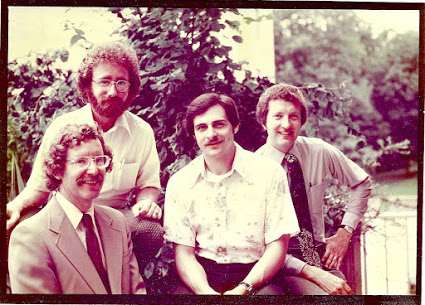
But here I want to focus my attention on Bruce Greyson for reasons that will soon become evident.
I have a vivid memory of when I first met Bruce. It was November 19, 1977, at the University of Virginia, where we had all gathered to meet Raymond Moody. Raymond whose little book, Life at Death, had by then to his surprise become a huge best seller, had been inundated with mail and had had to interrupt his medical training. He was eager to pass on the torch to some of us so he could finish his residency and become a practicing psychiatrist. I was in my early 40s; I think Bruce was about 36, and he was a stud then, dark-haired and handsome. As it turned out, Bruce and I really connected at that meeting, and together with John Audette, we went on to establish The International Association for Near-Death Studies (IANDS) a few years later — actually, exactly 40 years ago.
Once IANDS had been situated at the University of Connecticut early in 1981, I founded and edited an NDE journal, which then had the unfortunate and forgettable name of Anabiosis. But by the next year, I was due for a sabbatical during which I wanted to finish my book, Heading Toward Omega, so I asked Bruce if he would be willing to edit the journal while I worked on my book.
He was, and continued to do so for the next twenty-five years! If any of you have ever edited a journal, you know what a selfless and time-consuming task it is. You had to be willing to sacrifice your own career in order to enable other professionals to publish their own works. That’s the kind of person Bruce was and is. Totally dedicated. And while all of us in that original group eventually moved away from involvement with IANDS, only Bruce has remained faithful to it to this day. In my opinion, no one has done more to bring professional recognition to the field of near-death studies than Bruce. I have long held the view that his contributions to the field over more than forty years — his editorship of The Journal of Near-Death Studies, his many excellent and important research studies, the books he has co-edited containing his own articles, all the public lectures he has given, his service to NDErs as a master therapist, and so much more — mean that Bruce is without doubt the most important and influential professional in NDE studies.
That’s one reason I wanted to tell you about Bruce whose name may not be as familiar to you as that of some of the original pioneers whose work set the stage for the study of NDEs, such as Elisabeth Kübler-Ross and Moody himself, who coined the expression, “near-death experiences.” But soon Bruce will at long last gain the widespread recognition he deserves. I will get to that — the second reason I wanted to write this blog.
When we met, Bruce was working as a psychiatrist at the University of Virginia where his specialty was working with suicidal patients. When he had started his career there a year earlier, he knew nothing about NDEs. Indeed, he had never heard of them, and if he had, he would have dismissed them as hallucinations. Bruce had a strong skeptical bent, and was not religious or interested in spiritual matters. That was all to change, of course, and I will now tell you just how that happened.
One day Bruce was in the cafeteria munching his spaghetti lunch when his pager went off. The sound startled him, causing him to drop his fork and to splatter some spaghetti sauce on his tie. Peeved, he tried to remove the stain, but in vain. He would have to clean it later. Meanwhile, he found out that a patient had tried to kill herself and her roommate was waiting in the ER to speak to him.
Bruce first went to the patient’s room to examine her. Her name was Holly and she was unconscious, so Bruce could not speak with her at the time. A staff member who had been placed there for security purposes assured Bruce that Holly “had been out the whole time.” Bruce would have to return the next day when she presumably would be conscious again. In the meantime, he would seek out Holly’s roommate, Susan. Bruce interviewed her extensively that evening.
When he returned the next day to examine Holly, she said to him, “I know who you are. I remember you from yesterday.”
Bruce knew this was impossible. Holly was unconscious at the time. But Holly went on to explain, “Not in my room. I saw you talking with Susan, sitting on the couch.”
Bruce said, “The staff told you I spoke with Susan last night?”
“No,” Holly insisted, “I saw you.”
And then the clincher: “You were wearing a striped tie that had a red stain on it.”
“What?” Bruce was completely flummoxed by what Holly had told him. It was impossible.
But Holly then repeated what she had told him and went on to give an account of the conversation Bruce had had with her roommate, mentioning all his questions and Susan’s answers. Holly also recounted Susan’s pacing and Bruce’s moving a fan during his interview. All this was correct. How could Holly have seen this? Bruce’s skeptical boggle threshold went through the roof.
Bruce remembers that “the hair rose on the back of my neck and I felt goosebumps. She couldn’t have possibly known all that.”
The puzzled and skeptical psychiatrist couldn’t explain it but he couldn’t accept it either. He figured it must have been some kind of a trick. He tried to put it out of his mind. Just one of those weird things out of “The Twilight Zone.”
But Providence intervened. Not long afterward, Bruce encountered a psychiatry resident by the name of Raymond Moody and learned about Moody’s book, Life at Death. And a bell went off in Bruce’s head. So Holly’s experience, as inexplicable as it seemed to be, was not that unusual. Raymond had discussed a number of such cases in his book. Bruce wasn’t hooked right away — he was still skeptical — but he was intrigued. And as the years passed, he was more than intrigued. He became the foremost NDE researcher of his time who did more than anyone else to establish that the NDE was an authentic phenomenon and that it deserved serious attention from scholars and professionals.
Bruce and I came to spend some years together at UCONN when he was at the medical school there while I was in the psychology department. I got to know him well then, and we had so much fun, too, especially when we would have time for a long lunch together after one of his presentations to my NDE class. It was during that time that I came to love Bruce as a brother. This photo will perhaps give you a sense of our closeness and camaraderie.

Which brings me at last to the second reason I wanted to write about Bruce here. And that is to tell you about the book he has just written, which describes in very accessible language the work he has done over the past 45 years to help us understand how experiences like Holly’s could happen. He has given his book an unusual title, After. As he explains, the title doesn’t just refer to what might happen after death or what happens after NDEs, but what might happen after you read his book. Rilke famously said, “You must change your life.” Reading this book might change yours.
I’ve just read it, and it is humdinger. For anyone interested in NDEs, it is essential reading, and is surely destined to become a classic. Perhaps what I’ve already written will encourage you to buy it, but if I haven’t already persuaded you to do so, perhaps my “blurb” for the book will:
 “In After, psychiatrist Bruce Greyson tells the story of his personal and professional journey from a skeptical scientist to his becoming the most distinguished and important authority of near-death experiences in the field. Drawing on his treasury of forty-five years of research, and studding his account with fascinating cases, Greyson provides an always engrossing and illuminating survey of the basic findings and implications of NDE studies for the general reader. In his book, he shows us why he is regarded as the leading expert to put NDE studies on the map and establish it as a legitimate scientific enterprise. Moreover, he is not afraid to share his insights on spiritual issues that NDE research affords, including the possibility that death isn’t a dead end. Both inspiring and deeply personal, this is a book to savor and the culmination and capstone of Greyson’s outstanding career.”
“In After, psychiatrist Bruce Greyson tells the story of his personal and professional journey from a skeptical scientist to his becoming the most distinguished and important authority of near-death experiences in the field. Drawing on his treasury of forty-five years of research, and studding his account with fascinating cases, Greyson provides an always engrossing and illuminating survey of the basic findings and implications of NDE studies for the general reader. In his book, he shows us why he is regarded as the leading expert to put NDE studies on the map and establish it as a legitimate scientific enterprise. Moreover, he is not afraid to share his insights on spiritual issues that NDE research affords, including the possibility that death isn’t a dead end. Both inspiring and deeply personal, this is a book to savor and the culmination and capstone of Greyson’s outstanding career.”
……………..
IANDS Founders Panel: Dr. Raymond Moody, Dr. Bruce Greyson, John Audette
……………..
Dr. Bruce Greyson: 50 Years Of Near-Death Experience Research
……………..
Dr. Bruce Greyson: Why Near-Death Experiences Matter
……………..
Dr. Bruce Greyson: Expanding Science By Expanding The Consciousness Of Scientists
……………..
Dr. Bruce Greyson: Is Consciousness Produced By The Brain? (2011)
……………..
Dr. Bruce Greyson: A Cambridge College Student Who Was Missing Most Of His Cerebral Cortex
What Dr. Greyson’s Full Presentation Here
See also:
……………..
Professor Keith Kendrick: The Man With No Brain!
……………..
Dr. Bruce Greyson: Near-Death Experiences & Consciousness Without Brain Activity
……………..
Science and Postmortem Survival
Talk by Dr. Bruce Greyson
Society for Scientific Exploration
May 12, 2010
The belief that some part of human beings may survive bodily death has been around for millennia, yet it has been regarded as a scientific hypothesis only for the past century. Although some scholars still argue that belief in survival belongs to the magisterium of religion and is not amenable to scientific exploration, postmortem survival can be, and has been, operationalized in terms of empirically testable hypotheses. More than 40 years ago, a research division was founded at the University of Virginia for the scientific exploration of the survival question. Now designated the Division of Perceptual Studies within the Department of Psychiatry and Neurobehavioral Sciences, this division continues to pursue three parallel lines of empirical evidence bearing on the question of what, if anything, survives bodily death.
The first line of investigation explores the question of whether persons living today provide evidence of having lived previously, that is, of having reincarnated. This evidence may include verifiable cognitive memories from a previous life; unexpected personality traits, likes, and dislikes attributed to the previous life; unlearned skills attributed to the previous life; birthmarks and birth defects attributed to the previous life; and objective biometric similarities to the facial geometry of the previous life.
The second line of investigation explores the question of whether persons now deceased still manifest consciousness in some form. This evidence may include spontaneous or induced interactive apparitions of the deceased, communication with the deceased through mediums, instrumental transcommunication or contact through physical (usually electromagnetic) devices, and the communication of keys to decipher messages encrypted by the deceased prior to death.
The third line of investigation explores the question of whether the mind can function independent of the brain, a necessary (but not sufficient) condition for postmortem survival. This evidence may include unexplained recovery of lost mental functions as the brain dies, near-death experiencers with enhanced mental activity while the brain is demonstrably impaired, and out-of-body experiences with accurate perception from an extracorporeal perspective (sometimes accompanied by objective detection of a disembodied entity).
The convergent evidence from these three lines of investigation provides empirical support for the scientific hypothesis of postmortem survival.
Bruce Greyson, M.D., is the Chester F. Carlson Professor of Psychiatry & Neurobehavioral Sciences and Director of the Division of Perceptual Studies at the University of Virginia. He was a founder and Past President of the International Association for Near-Death Studies, and for the past 26 years has edited the Journal of Near-Death Studies. Dr. Greyson graduated from Cornell University with a major in psychology, received his medical degree from the State University of New York Upstate Medical College, and completed his psychiatric residency at the University of Virginia. He held faculty appointments in psychiatry at the University of Michigan and the University of Connecticut, where he was Clinical Chief of Psychiatry, before returning to the University of Virginia, in 1995. His research for the past three decades has focused on near-death experiences and has resulted in more than 70 presentations to national scientific conferences, including an international symposium at the United Nations last year, more than 100 publications in academic medical and psychological journals, three edited books, and several research grants and awards. He has been given Lifetime Achievement Awards by the International Association for Near-Death Studies and the Parapsychology Association, and is a Distinguished Life Fellow of the American Psychiatric Association.
……………..
Dean Radin Interviews Dr. Bruce Greyson About Near-Death Experiences
Dean Radin, Senior Scientist at the Institute of Noetic Sciences (IONS), conducted an extensive interview with NDE researcher Bruce Greyson, Director of the Division of Perceptual Studies at the University of Virginia Medical School, on October 13, 2010. Another version of this interview is located here (mp3).
Excerpts:
09:00 – 10:25
Bruce Greyson: “If you try to bring about a near-death experience, it’s not likely that you will actually have one. If you look at the content, the process of a near-death experience, one of the critical factors often seems to be letting go, giving up control, or having control arrested from you. Sometimes people will report approaching death and trying very hard to stay alive, trying very hard to stay in control, and fighting very hard against loosing control. And at some point they get exhausted and give in and just let go. And when they let go they are able to have this experience. And we find that those people who are able to let go are the ones who have the more elaborate experiences and have the more profound aftereffects. So if you are trying to bring about a near-death experience — and people have tried this with drugs, with various other means — you are not actually letting go, you’re not giving up control, you’re trying to maintain control. And I think that works against actually having the experience.”
34:56 – 36:16
Call in Question: “I would like to know how the study of this subject has changed you over time personally; how has this affected you personally…”
Bruce Greyson: “Most people who have near-death experiences talk about the profound changes in their attitudes, values, and beliefs afterwards. Most profoundly, they are no longer afraid of dying, but they also become more open in many other ways. I think some of that has rubbed off on me. You can’t listen to these stories year after year and not be affected… I don’t think I have the aftereffects of a near-death experience, but I think I am much less afraid of dying than I was before I started all this work. I’m much more open to other possibilities. There is a sense of meaning and purpose in the world that near-death experiencers seem to have that they didn’t have before and I think I’ve gotten some of that; the sense that things do really happen for a purpose; that there is something that we all have in common that I wasn’t aware of before I did all this work.”
36:48 – 38:10
Bruce Greyson: “I did a study once looking at people who had made suicide attempts and either did or didn’t have near-death experiences. I would interview them right after the suicide attempt and then every month thereafter. And there were some people who right after the suicide attempt told me that nothing had happened. And then a month or two later, they would say, you know, now that I’ve gotten to know you a bit, I think I can tell you that I did actually leave my body. And maybe four or five months later they would say, well now that I know you’re not going to make fun of me for this, I’ll tell you what really happened. They’ll tell me about seeing a deceased loved one. And then a year later they’ll say, Now that I know that you’re not going to treat me like I’m crazy, let me tell you what really happened. And they’ll tell you about meeting Jesus. And they keep telling you more and more as they start to trust you more and more. And there are some near-death experiencers that I’ve known for 30 years who I’m sure have not yet told me the more personal parts that they just can’t share. Some things are just too personal and… it would profane the experience by sharing it with somebody else.”
Dean Radin: “That’s interesting because it does suggest then that the percentage of people who report near-death experiences may be a vast underestimate.”
Bruce Greyson: “That’s right. I think that’s true.”
…………..
Interview: Bruce Greyson On Researching Near-Death Experiences At The University Of Virginia
By Tara MacIsaac
Epoch Times
May 25, 2015
At the University of Virginia, a space is given to the scientific investigation of strange phenomena that challenge currently accepted scientific assumptions. Such phenomena include extrasensory perception (such as telepathy), apparitions and deathbed visions, poltergeists, experiences of persons who come close to death and survive (usually called near-death experiences), out-of-body experiences, and claimed memories of previous lives.
Dr. Bruce Greyson is one of the several scientists who work in this Division of Perceptual Studies (DOPS), and his specialty is near-death experiences.
Dr. Greyson’s father was a chemist. The material sciences reigned in his house and spiritual matters were not much considered. Greyson followed in his father’s footsteps, but his fascination with unanswered questions drew him away from the material sciences and toward psychiatry when he was in medical school.
“When I got into psychiatry, one of the areas that had the most unanswered questions was this whole area of the paranormal — things that sound psychotic on the surface (of course, they are so different from everyday reality), but they happen to perfectly normal, sane people,” he said.
Sitting in his office at DOPS, Dr. Greyson was encircled by small mountains of stacked papers. A wall of his office was also lined with filing cabinets brimming with cases of profound near-death experiences (NDEs). Mild-mannered, sober yet quietly enthusiastic, Dr. Greyson described some of those cases. He is particularly interested in the stunning after-effects on these individuals who report leaving their bodies during a brush with death and entering a visceral but ethereal state of being.
While the causes of such experiences are much-debated, the indisputable fact is that NDEers are deeply impacted.
“As a psychiatrist, what’s much more interesting to me is not the ‘knock your socks off’ part of the experience, but the after-effects, the way it changes people’s lives,” Dr. Greyson said. “Psychiatrists and psychologists spend a lot of hard work trying to get people to make fairly small changes, and here in the flash of a second, people are totally transformed — this is a powerful experience!”
In one case, a man was an alcoholic and he was abusive toward his wife. After an NDE, he became an all-around good Samaritan. He didn’t drink, he was good to his wife, he helped others. For example, he rushed to New Orleans to join efforts following Hurricane Katrina. Though his wife was happy with the changes, she did complain that he became too oblivious to everyday practical matters, such as paying bills. It’s as though his glimpse of the next life made him less concerned with this one.
Dr. Greyson explained: “We’re all taught the Golden Rule, and we see it’s something we’re supposed to strive toward — you try to treat others the way you want to be treated — but when you have a near-death experience, it’s not a rule you’re supposed to follow. It’s just the way the universe works and of course you do that, because we’re all in this together, we’re all the same. If I hurt someone else I’m hurting myself.”
While one may understand this principle on the surface — and Dr. Greyson has been reminded of this often through his interaction with NDEers — it’s another thing to really accept it deep down. “I’ve changed a lot because of this research,” he said, “But I don’t think it’s on the order of magnitude of someone who actually had the experience.”
One of the most profound effects Dr. Greyson has observed is a loss of the fear of death. No longer afraid of death, NDEers are also no longer afraid of living life to the fullest.
The changes in an NDEer are often immediate, and almost always dramatic and lasting. They aren’t like fleeting New Year’s resolutions or the many life lessons we seem to have to relearn again and again. Dr. Greyson has followed up on cases over the course of decades and found that in about 95 percent of the cases, it remains as though the NDE just happened.
It’s not all ideological either. Physical NDE effects have been observed. Electromagnetic after-effects apparently make NDEers affect devices; their car batteries may inexplicably die or their cell phones will stop working. Some NDEers also have unusually low blood pressure, an increased tendency toward allergies, sensitivity to alcohol or bright lights, and other effects.
While some generalizations can be made about NDEs, they also vary widely. For example, depending on a person’s social or cultural background, he or she may frame the description of the experience differently. This may be because NDEs are so outside of the normal range of experiences that it is hard to describe them accurately in words. People grasp for familiar terms to describe something utterly unfamiliar.
A Christian may say he saw Jesus or angels. Someone from another culture may say he saw the God of death. Some people describe entering a tunnel, but a truck driver once described himself entering something like a tail pipe!
Many NDEers don’t talk about their experiences at all. They fear sounding crazy. Members of Dr. Greyson’s own family had kept such secrets. After he began talking about NDEs, they spoke with him in private and revealed their own experiences.
In the 1980s, Dr. Greyson presented information about NDEs at an American Medical Association conference. One cardiologist stood up after the presentation and said that in his 20 years of practice he’d never heard of anything like the NDEs described. He asked how it could be proven that the patients in these cases weren’t just making it up. Another man stood up and said that he was that doctor’s patient and he would never have told him about such an experience.
The openness of healthcare professionals to discussing NDEs is a prominent topic among NDE researchers. Many NDEers who have opened up to doctors or nurses have been rebuffed, and in extreme cases even diagnosed as mentally ill.
Dr. Greyson and the other DOPS researchers are grateful to have a space within a well-respected academic institution to seriously approach these mysteries. DOPS is privately funded, though it is part of the university. Dr. Greyson pointed out photos hanging in the lobby, one of which showed the first major donor, Chester Carlson, who invented the Xerox process. Two other major donors were also pictured—silent film actresses who left DOPS their fortunes. Hanging near the donors’ photos was an image of the late Dr. Ian Stevenson who founded DOPS and contributed years of methodical research into cases of children who seem to remember past lives.
On another wall was a photo of Dr. Greyson meeting the Dalai Lama. Across the hall, Dr. Greyson opened the door to a lab where his colleagues test the brain activity of people who seem to have special abilities. A spoon seemingly twisted by the power of a person’s mind was hung up on a bulletin board. Colorfully dotted electroencephalogram (EEG) caps for testing electrical activity in the brain lay on shelves along the walls.
While Dr. Greyson studies the profound after-effects of NDEs, some of his colleagues probe the mind-brain relationship and examine the nature of consciousness from another angle. Dr. Greyson once told the University of Virginia magazine: “Our mind-brain identity model works fine for everyday walking and talking, but when you’re looking at times when the brain is not functioning and the mind seems to function quite well, you get into that extreme area where we need to look at some other models.”
……………..
Dr. Bruce Greyson: Science & Postmortem Survival (2010)


